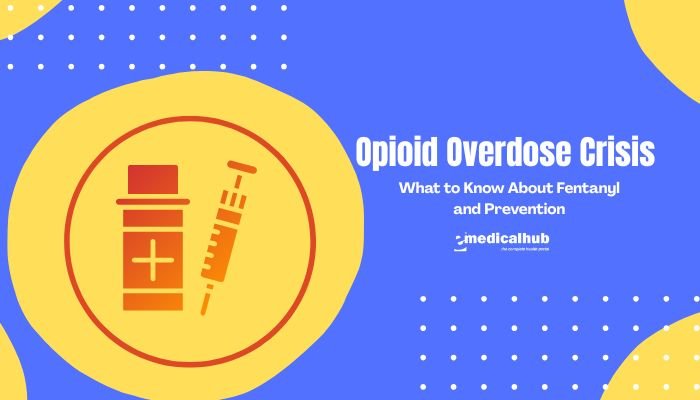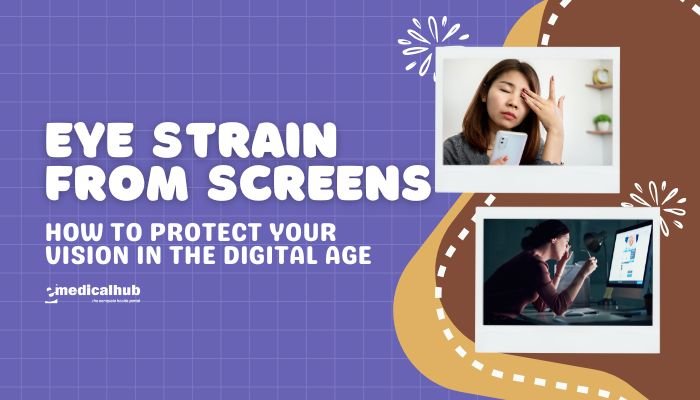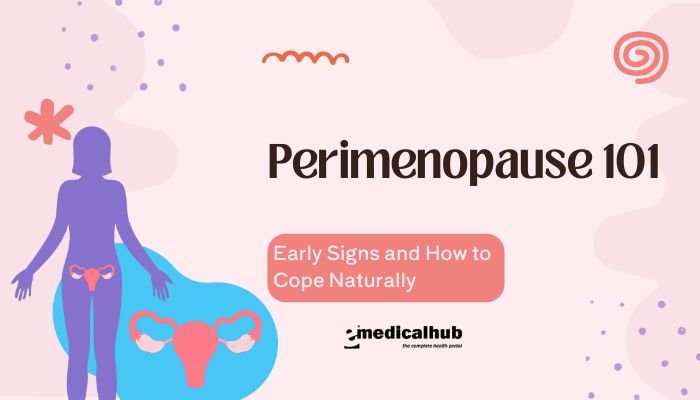Introduction
Intravenous (IV) vitamin therapy has become a buzzword in the wellness industry. Promoted as a way to deliver high doses of vitamins, minerals, and antioxidants directly into the bloodstream, it promises everything from enhanced energy and immune support to improved skin and overall vitality. As celebrity endorsements and social media hype fuel its popularity, many wonder: Is IV vitamin therapy a breakthrough in boosting health, or is it just an expensive trend with little scientific backing?
This article explores the principles behind IV vitamin therapy, examines the proposed benefits and the scientific evidence, and discusses potential risks and cost considerations. Whether you are curious about trying IV therapy for a quick energy boost or as a long-term wellness strategy, read on to discover whether this treatment lives up to its promises or if you might be better off with more conventional approaches.
Disclaimer: This article is for educational purposes only and does not substitute for professional medical advice. If you are considering IV vitamin therapy, especially if you have underlying health conditions, consult a qualified healthcare provider before starting treatment.
What Is IV Vitamin Therapy?
Definition and Overview
IV vitamin therapy involves administering vitamins, minerals, and other nutrients directly into the bloodstream through a small needle inserted into a vein. This method bypasses the digestive system, which may lead to more efficient absorption compared to oral supplements.
- Direct Delivery: Nutrients are delivered straight into the circulation, ensuring maximum bioavailability.
- Customizable Formulas: Therapies can be tailored with specific vitamins (such as vitamin C, B vitamins, or vitamin D), minerals (like magnesium or calcium), and antioxidants depending on individual needs.
- Rapid Results: Users often report feeling an immediate boost in energy and well-being following treatment.
Historical Context
- Medical Origins: IV therapy has been used in hospitals for decades to treat dehydration, nutrient deficiencies, and serious illnesses.
- Wellness Adoption: Over the last decade, wellness centers and clinics have adapted this medical technique for non-critical purposes, such as boosting energy, enhancing immunity, and speeding up recovery from strenuous exercise.
- Celebrity Endorsements: High-profile endorsements have helped popularize IV vitamin therapy among those seeking quick fixes for fatigue and general malaise.
Proposed Benefits of IV Vitamin Therapy
Proponents of IV vitamin therapy claim that it can offer a range of health benefits by delivering nutrients more effectively than oral supplements.
Enhanced Nutrient Absorption
- Bypassing Digestion: IV therapy avoids the gastrointestinal tract, where factors like poor absorption, digestive enzymes, and food interactions can reduce nutrient availability.
- Higher Bioavailability: Direct entry into the bloodstream ensures that nutrients are readily available for cellular uptake.
Boosted Energy and Immune Function
- Increased Energy: High doses of B vitamins, vitamin C, and other nutrients are believed to support mitochondrial function, leading to improved energy levels.
- Immune Support: Antioxidants and vitamins delivered via IV may help bolster the immune system, potentially reducing the frequency of colds and other minor illnesses.
Hydration and Detoxification
- Improved Hydration: Many IV drips include saline solutions that can help rehydrate the body quickly.
- Detox Support: Some formulations claim to help eliminate toxins from the body, supporting liver and kidney function.
Recovery and Performance Enhancement
- Post-Exercise Recovery: Athletes may use IV vitamin therapy to reduce muscle soreness, replenish lost electrolytes, and speed up recovery.
- Enhanced Physical Performance: By optimizing nutrient levels, some users report improved stamina and performance in physical activities.
Skin and Anti-Aging Benefits
- Skin Glow: Some formulations include antioxidants that promote healthier skin and may reduce signs of aging.
- Anti-Inflammatory Effects: Reducing systemic inflammation can contribute to overall skin health and vitality.
Scientific Evidence and Research Findings
Evidence Supporting IV Vitamin Therapy
Several small-scale studies and clinical observations suggest that IV vitamin therapy can offer benefits in specific scenarios:
- Energy and Immune Boost: Some studies have shown that IV vitamin C can help reduce the duration of colds and improve immune markers, especially in individuals with deficiencies.
- Athletic Recovery: Research on athletes indicates that IV hydration and nutrient supplementation can improve recovery times after intense exercise.
- Antioxidant Effects: Clinical trials have demonstrated that high-dose vitamin C administered intravenously can significantly increase antioxidant levels in the blood.
Limitations and Mixed Results
Despite promising findings, many experts note several limitations:
- Small Sample Sizes: Many studies involve small groups, limiting the ability to generalize findings to broader populations.
- Lack of Standardization: Variations in IV formulations, dosages, and administration protocols make it challenging to compare results across studies.
- Placebo Effects: Some benefits reported may be influenced by the placebo effect, where the expectation of feeling better contributes to the outcome.
- Insufficient Long-Term Data: Most research focuses on short-term effects, and more long-term studies are needed to fully understand the impact on overall health.
The Consensus in the Medical Community
- Complementary Role: Many healthcare providers view IV vitamin therapy as a complementary treatment rather than a primary therapy. It may be useful in cases of acute deficiencies or for short-term recovery, but it is not widely recommended as a long-term substitute for a balanced diet and healthy lifestyle.
- Cost-Benefit Considerations: Given the high cost of IV treatments, experts emphasize that the benefits must be weighed against the expense, particularly when similar results might be achieved through dietary improvements and oral supplements.
Potential Risks and Downsides
While IV vitamin therapy is generally considered safe when administered by qualified professionals, there are potential risks to be aware of.
Medical Risks
- Infection: As with any intravenous procedure, there is a risk of infection if needles or equipment are not properly sterilized.
- Phlebitis and Vein Irritation: Repeated IV insertions can cause inflammation of the veins.
- Electrolyte Imbalance: High doses of certain vitamins or minerals can disrupt the body’s electrolyte balance.
- Allergic Reactions: Some individuals may experience allergic reactions to specific components of the IV solution.
Financial Considerations
- High Costs: IV vitamin therapy can be expensive, especially when repeated sessions are required. The cost-effectiveness of these treatments is debated, as many benefits may be achieved through less costly methods.
- Insurance Coverage: Most insurance plans do not cover IV vitamin therapy for wellness or non-critical conditions, meaning out-of-pocket expenses can add up.
Overuse and Dependency
- Short-Term Fix: Relying on IV vitamin therapy without addressing underlying lifestyle factors (diet, exercise, sleep) may lead to dependency on the treatment for feeling well.
- Nutrient Overload: In some cases, high doses of vitamins can cause toxicity or interfere with the body’s natural regulatory mechanisms.
Cost-Effectiveness and Practical Considerations
Comparing IV Therapy to Oral Supplements
A practical way to evaluate IV vitamin therapy is to compare it with more traditional approaches:
| Factor | IV Vitamin Therapy | Oral Supplements |
| Absorption Rate | Nearly 100% (directly in blood) | Variable; affected by digestion |
| Onset of Effects | Rapid (minutes to hours) | Slower (hours to days) |
| Cost | High; typically $100-$300 per session | Generally low; $20-$50 per bottle |
| Convenience | Requires professional administration | Self-administered, at home |
| Suitability for Deficiencies | Beneficial for severe deficiencies or acute needs | Suitable for mild to moderate deficiencies |
| Long-Term Use | Not generally recommended for routine supplementation | Ideal for daily, long-term use |
Practical Scenarios
- Acute Illness or Recovery: IV vitamin therapy may be particularly useful for boosting immune function during acute illnesses or for rapid recovery after intense physical activity.
- Chronic Deficiencies: For individuals with documented severe vitamin deficiencies, IV therapy might offer a more effective short-term solution while long-term dietary improvements are made.
- Wellness Trends vs. Medical Necessity: For those without specific deficiencies, the benefits of IV vitamin therapy for general wellness may not justify the high cost compared to a nutrient-rich diet and oral supplements.
Decision-Making for Potential Users
- Consult a Healthcare Provider: A medical evaluation can determine if you have a nutrient deficiency that might benefit from IV therapy.
- Assess Your Lifestyle: Consider if your diet, exercise, and sleep habits are optimized. Often, lifestyle changes can yield similar benefits at a lower cost.
- Budget Considerations: Weigh the cost of regular sessions against the potential benefits and your overall healthcare budget.
Who Might Benefit and Who Should Avoid IV Vitamin Therapy?
Potential Beneficiaries
- Individuals with Severe Deficiencies: Patients with malabsorption issues or significant nutrient deficiencies might benefit from the rapid replenishment offered by IV therapy.
- Athletes: Those requiring quick recovery and rapid rehydration after intense workouts might find IV therapy advantageous.
- Patients with Acute Illnesses: Certain acute conditions, such as severe flu or post-surgery recovery, may temporarily benefit from enhanced nutrient delivery.
- Individuals with Chronic Fatigue: For some, IV vitamin therapy can provide a temporary boost in energy and well-being.
Who Should Exercise Caution
- Healthy Individuals Without Deficiencies: For those with balanced diets and no significant health issues, the high cost of IV therapy may not be justified.
- Pregnant or Nursing Women: Safety data is limited, and it is generally advised to avoid high-dose IV treatments during these periods unless medically indicated.
- Patients with Kidney or Liver Disease: Overloading the body with vitamins and minerals can put additional strain on these organs.
- People on Certain Medications: Interactions between high doses of vitamins and prescription medications may pose risks; consultation with a healthcare provider is essential.
Frequently Asked Questions (FAQ)
- What is IV vitamin therapy?
IV vitamin therapy is a treatment that delivers vitamins, minerals, and other nutrients directly into the bloodstream via an intravenous infusion, bypassing the digestive system for enhanced absorption. - How quickly does IV vitamin therapy work?
Effects can be felt within minutes to hours, as nutrients are delivered directly into circulation. - What conditions might benefit most from IV vitamin therapy?
It may help individuals with severe nutrient deficiencies, athletes needing rapid recovery, and patients with acute illnesses or chronic fatigue, though its benefits for general wellness remain debated. - Is IV vitamin therapy safe?
When administered by a qualified professional in a sterile environment, it is generally safe. However, risks include infection, vein irritation, and potential nutrient imbalances if overused. - How does IV vitamin therapy compare to taking supplements orally?
IV therapy offers near 100% absorption and rapid effects, whereas oral supplements are subject to digestive losses and variable absorption rates. However, oral supplements are more cost-effective and convenient for long-term use. - Are there side effects associated with IV vitamin therapy?
Some individuals may experience minor side effects such as bruising, nausea, or headache. Serious complications are rare when proper protocols are followed. - How much does a session typically cost?
Costs vary widely, but sessions often range from $100 to $300. Most insurance plans do not cover IV vitamin therapy for wellness purposes. - Can IV vitamin therapy replace a healthy diet?
No. It should be considered a complementary treatment. A balanced, nutrient-rich diet remains the cornerstone of long-term health. - How often should one undergo IV vitamin therapy?
Frequency depends on individual needs and deficiencies. Some may benefit from occasional sessions, while others with chronic conditions might require more regular treatments under medical supervision. - Can IV vitamin therapy help with weight loss?
There is no strong evidence that IV vitamin therapy directly promotes weight loss. It may improve energy levels, which could encourage more physical activity, but it should not be seen as a weight loss treatment on its own. - Who should avoid IV vitamin therapy?
Individuals without documented nutrient deficiencies, pregnant or nursing women (unless medically advised), and those with kidney or liver disease should exercise caution and consult a healthcare provider. - Is there long-term research on IV vitamin therapy?
Long-term studies are limited, and most research focuses on short-term benefits. More robust clinical trials are needed to determine its long-term efficacy and safety.
Conclusion
IV vitamin therapy is a modern twist on an established medical treatment, offering a way to rapidly deliver nutrients directly into the bloodstream. Proponents claim that it can boost energy, enhance immune function, support athletic recovery, and even improve overall well-being. While there is promising evidence for its use in specific cases—such as severe deficiencies, acute illnesses, and post-exercise recovery—the scientific consensus on its effectiveness for general wellness remains mixed.
For healthy individuals, a balanced diet, regular exercise, and proper sleep are the most reliable methods for maintaining optimal health. IV vitamin therapy may offer additional benefits in certain situations, but its high cost and potential risks mean that it should be viewed as a complementary treatment rather than a standalone solution.
Before considering IV vitamin therapy, it is essential to consult with a healthcare provider, assess your nutritional status, and weigh the benefits against the expenses. With proper guidance and a commitment to overall healthy living, IV vitamin therapy might play a useful role in your health regimen—but it is not a magic bullet that replaces the fundamentals of a balanced lifestyle.
References
- Block G, et al. Vitamin C administration by intravenous route: a systematic review. J Transl Med. 2019;17(1):21.
- Carr AC, Maggini S. Vitamin C and immune function. Nutrients. 2017;9(11):1211.
- Hemilä H. Vitamin C and infections. Nutrients. 2017;9(4):339.
- Padayatty SJ, Levine M. Vitamin C: the known and the unknown and Goldilocks. Oral Dis. 2016;22(6):463-493.
- Fowler AA III, et al. Phase I clinical study of intravenous ascorbic acid in advanced cancer. Ann Oncol. 2008;19(1):9-16.
- Monti DA, et al. High-dose intravenous vitamin C, a promising cancer therapy? Curr Opin Oncol. 2012;24(1):25-31.
- Jacob RA, et al. Intravenous vitamin C in the treatment of severe sepsis: a randomized, placebo-controlled pilot study. J Crit Care. 2015;30(3):424-429.
- Moyer VA, et al. Vitamins for chronic disease prevention in adults: scientific review. JAMA. 2014;311(22):2293-2304.
- Levine M, et al. Vitamin C pharmacokinetics in healthy volunteers: evidence for a recommended dietary allowance. Proc Natl Acad Sci U S A. 1996;93(8):3704-3709.
- Fisher BJ, et al. High-dose intravenous vitamin C enhances cancer immunotherapy: a mechanistic perspective. J Clin Oncol. 2020;38(15):e14070.
- Naidu KA. Vitamin C in human health and disease is still a mystery? An overview. Nutr J. 2003;2:7.
- U.S. Food and Drug Administration. Investigational New Drug (IND) Applications for Intravenous Vitamin C. Silver Spring, MD: FDA; 2017.




